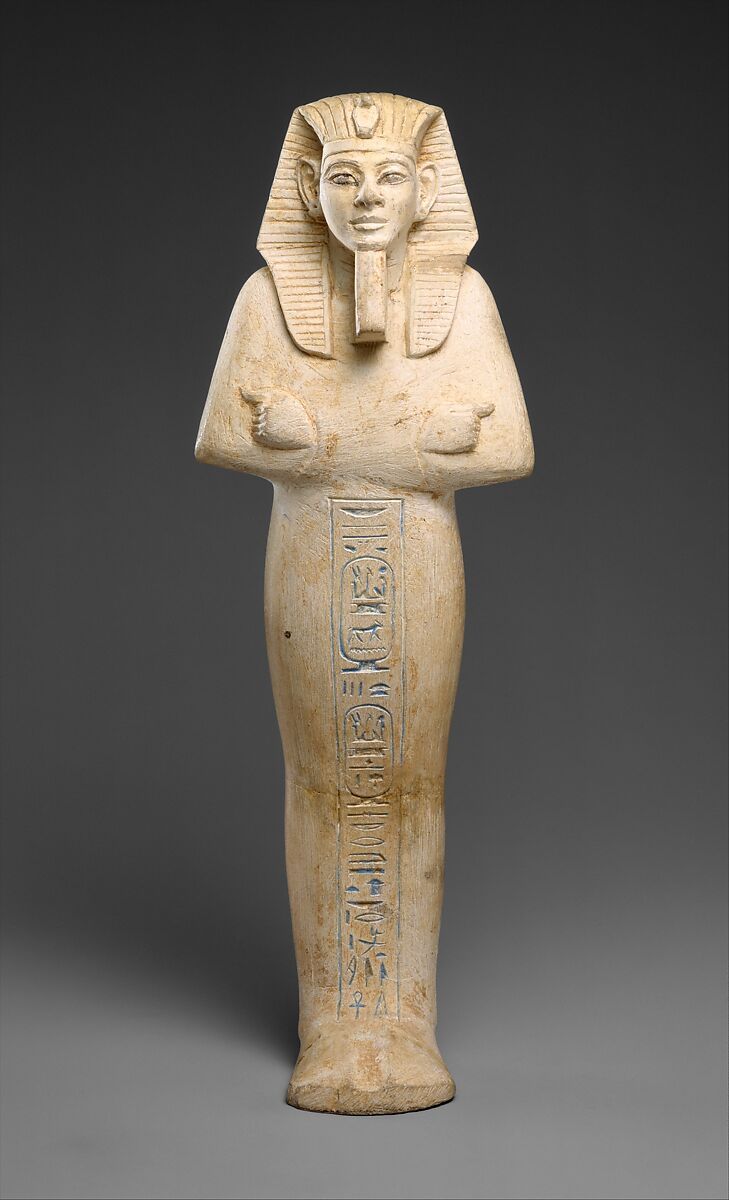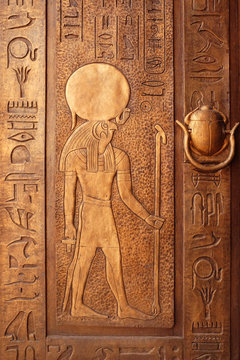Introduction
The relief of Pharaoh Merneptah being greeted by the sun god Ra-Horakhty is a remarkable piece of ancient Egyptian art that reflects the divine legitimacy of the king. This intricate carving, found in the Tomb of Merneptah (KV8) in the Valley of the Kings, West Thebes, dates back to the 19th Dynasty of the New Kingdom (circa 1292–1189 BC). Beyond its artistic beauty, the relief holds deep religious and symbolic significance, demonstrating the profound connection between Egyptian rulers and the gods.

Historical Context of Merneptah
Merneptah was the thirteenth son and successor of Ramesses II, ascending the throne at an advanced age after his father’s long reign. His rule was marked by military campaigns, including the famous victory over the Sea Peoples and Libyan invaders, as recorded on the Merneptah Stele. Despite ruling for only about ten years (circa 1213–1203 BC), Merneptah sought to solidify his divine status through grand monuments and elaborate tomb decorations, following the tradition of his predecessors.

Symbolism of Ra-Horakhty in the Relief
Ra-Horakhty, depicted in the relief, is a solar deity combining Ra (the sun god) and Horakhty (Horus of the Horizon), embodying the eternal cycle of day and night. His presence in the scene signifies several key aspects of Merneptah’s reign and afterlife beliefs
- Divine Kingship The greeting of Merneptah by Ra-Horakhty reinforces the pharaoh’s legitimacy as a ruler chosen by the gods
- Cycle of Rebirth As a solar deity, Ra-Horakhty represents renewal and the journey of the sun, paralleling the pharaoh’s own transition into the afterlife
- Guidance into the Afterlife The depiction aligns with ancient Egyptian religious beliefs, where the sun god plays a crucial role in guiding the deceased king through the underworld

The Artistic and Religious Significance of KV8’s Reliefs
The Tomb of Merneptah (KV8) is one of the largest in the Valley of the Kings, extending deep into the rock with a series of corridors and chambers. The walls are adorned with sacred texts and religious imagery, including passages from
- The Book of Gates Illustrating the journey through the twelve gates of the underworld
- The Book of the Dead Providing spells and guidance for the deceased king’s safe passage
- The Litany of Ra Honoring the sun god in various forms, emphasizing his role in resurrection
The relief of Merneptah and Ra-Horakhty is a key part of this visual narrative, reinforcing the idea that the pharaoh, like the sun, would be reborn in the afterlife
Preservation and Legacy
Over the centuries, the tomb has suffered from structural damage and looting, but many of its carvings, including the depiction of Merneptah and Ra-Horakhty, remain visible. Despite these challenges, the relief continues to be a vital source of insight into the religious beliefs and artistic achievements of the New Kingdom period
Conclusion
The relief of Merneptah welcomed by Ra-Horakhty is more than a simple wall carving—it is a powerful representation of divine kingship, the journey of the soul, and the intricate religious traditions of ancient Egypt. Through such artistic masterpieces, we gain a deeper appreciation for the civilization’s spiritual depth and its enduring legacy in world history

